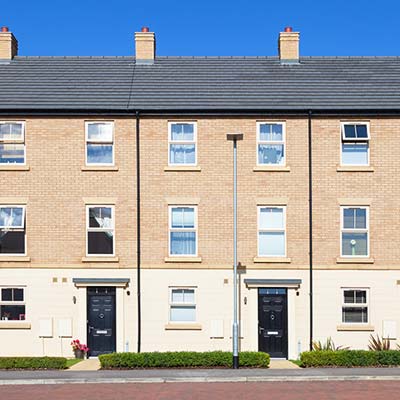HMO mortgage calculator
Compare HMO mortgage rates using our calculator (HMO stands for Houses of Multiple Occupation).
It provides you with an indication of the interest rate and monthly repayments, as well as listing product fees and benefits.
It does not provide a full mortgage illustration and is not a guarantee of the rate you can secure.
Our team of HMO mortgage specialists are on hand to help via live chat or phone during office hours, should you have any questions. You can submit an enquiry out of hours and we will get back to you.
Get started now - simply fill in the calculator to begin.
How to use the HMO mortgage calculator
To see live HMO mortgage rates, updated twice daily, put the following details into the calculator:
Ready to discuss your HMO mortgage needs? Enquire to get call from an advisor
Looking for something different? Check our resources.
Frequently asked questions
Yes, you absolutely can. There are a large number of lenders offering mortgages for a House of Multiple Occupation.
Smaller properties with fewer bedrooms (4-6) typically attract lower mortgage interest rates than large HMOs with more than 6 bedrooms. A specialist mortgage broker can help you find a mortgage suited to the property you want to buy.
HMO mortgage interest rates are calculated based on the loan to value you need (the amount you want to borrow from the lender, versus the value of the property) and other risks associated with the lending.
Small HMO properties - where an HMO is a property that could easily be resold as a residential house (if a lender had to repossess it), typically mortgage interest rates are lower, because the property carries less risk.
Large HMO properties - if you are investing in a large HMO property, which can only be used for this purpose (or would require work and possibly planning permission to change its use), then interest rates tend to be higher, because the ability to re-sell the property as easily is reduced.
You can currently borrow up to 80% of the value of the property you want to buy on an HMO mortgage.
This loan to value is available to both first time landlords (someone who owns their own home but no rental properties) and experienced landlords, but not to first time buyers (those people who have never owned a property before), where the maximum loan to value is 75% and so would need a 25% deposit.
The minimum deposit on an HMO mortgage is 20% of the property value, but, if you do not have this amount in cash, you may be able to raise a deposit from available equity in other property you own.
Yields on HMO (Houses of Multiple Occupation) property tend to be higher than standard buy to lets, because there are several rents coming in for one property, which when added together would typically generate a larger income than the rent you could charge to a single family unit occupying the same property.
Calculating the yield of your HMO property can be done in a number of ways, two of which are described below:
To calculate gross yield: Multiply monthly rental income x 12 months in the year = annual rental income. Divide the annual rental income by the property's purchase price. Multiply the number by 100 to get the gross rental yield as a percentage.
To calculate net yield: Multiply monthly rental income x 12 months in the year = annual rental income. Take away all costs associated with owning the property (e.g. mortgage, insurance, maintenance, letting agent fees, tax). Multiply the number by 100 to get the net rental yield as a percentage.
There are two ways a valuation on a HMO property can take place:
1) A 'desktop' valuation: This is where the lender will use information found online to establish the value of the property. This method can save time and money, compared to having a valuer visit the property.
2) An in-person valuation: If it is not possible to value a property from information online, or it does not form part of a lender's underwriting practices to do so, a valuer will instead have to visit the property to establish its value.
Typically, because HMO properties are more complex, an in-person valuation will be required.



